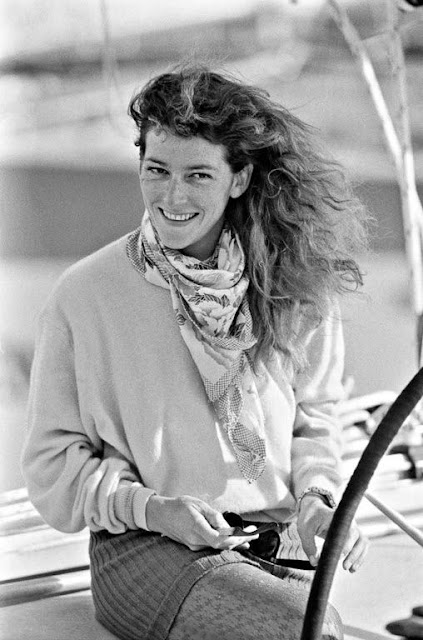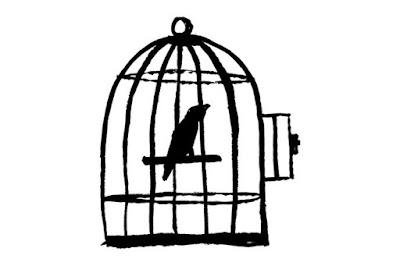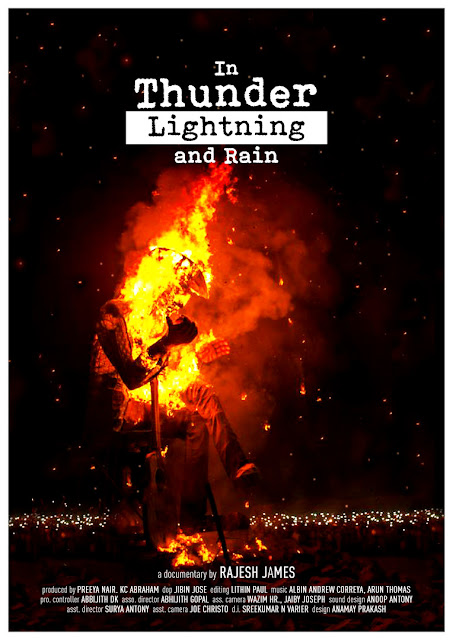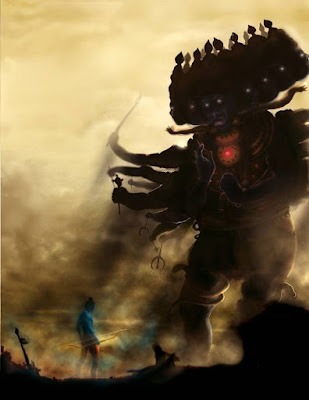WOMEN
CHARACTERS OF RAMAYANA
Ramayana, the Epic text
known as the story of Rama’s journey (Rama’s
Ayana) presents a strong band of women who display an array of fine
qualities. But the disappointing fact about these characters are that most of
them are forgotten in the course of time and lost their presence in many
translations and adaptations of Ramayana. Only a few characters like, Sita,
Kaikeyi, Manthara, Kausalya and Mandodari got the prominent spotlight even
though the other women characters are as unique as these women. Even in Valmiki
Ramayana the focus was on the life events of Rama and most of the women characters appear in the
events without proper description or history. Even their life after the
encounter with Rama or their death was not mentioned in the Epic.
Ramayana have
an immense number of translations not only in Indian languages, but also occupy
a definite place in many foreign languages and literature. The excessive number
of these texts shows variety of plot changes and character descriptions. But by
referring to the most common version of stories of Ramayana, here we are
presenting you the major 25 women characters of Ramayana. A small description
is given along with each one that may give you a basic idea of the characters.
Ramayana is not just
the story of Rama, but also of numerable characters who shaped the epic in their own way. So
let’s meet some strong, brilliant, courageous and determined women in Ramayana.
Read them, Remember them, Revive them.
·
Indumathi – Mother of Dasarath. She was
the princess of Vidarbha and daughter of King Bhoja. She was an angel named
Harini who was cursed to born as a human by a saint. She born as a human and
married Aja, King of Kosala and gave birth to Dasarath. She was freed from the
curse when she died as the garland of Devrishi Narath fell on her as he was
passing through the sky. Dasarath was only 8 months old when she died and out of
grief Aja committed suicide as he loved her immensely.
·
Kausalya – First wife of Dasarath. She
as the princess of Kosala kingdom and the daughter of King Sukaushal and
Queen Amritaprabha. She had a brother named Bhanumatha and a sister named
Vershini (Wife of Lompada, King of Ang Desh and fostermother of Santha) . She
had a daughter named Shantha and a son, Rama from Dasarath.
·
Kaikeyi – Wife of Dasarath. She was the
daughter of Ashwapati, the King of Kekaya kingdom. She had 4 brothers including
Yudhajit and she had a son named Bharath from Dasarath. She met king Dasarath
in Kashmir and fell in love. She fell under the influence of Mandhara and
became the reason of Rama’s exile.
·
Sumithra – Wife of Dasarath. She was the
princess of Kashi and the mother of Lakshmana and Shatrughana.
·
Santha – Daughter of Dasarath and Kausalya.
She was the elder sister of Rama and other 3 brothers. She was taken care by
her foster parents, King Lompada of Ang Desh and his wife Vershini. She was
married to Rishyashringa, son of sage Vibhandaka. She was mentioned in
Mahabhratha more than Ramayana.
·
Sita – Sita is considered as the
incarnation of Goddess Lakshmi and the daughter of Goddess Earth (Bhumi \
Prithvi). She was raised by King Janaka of Videha (Mithila) and his wife Queen
Sunaina. She had a younger sister named Urmila. She was married to the prince
of Ayodhya, Rama in a swayamvara. Sita was also known as Janaki (daughter of
Janaka), Maithili (princess of Mithila) and Vaidehi (princess of Videha). She
returned to the womb of her mother Earth (dies) after reuniting her sons Lava
and Kusha with Rama. Mandavi (wife of Bharath) and Shrutakirti (wife of
Shatrughana) were Sita’s cousin sisters.
·
Mandavi – Wife of Bharath. She was the
daughter of King Kushadhwaja of Sankasya and Queen Chandrabhaga. She had a
sister named Shrutakirti and Sita was their cousin sister. She had two sons
Taksha and Pushkala with Bharath.
·
Urmila – Wife of Lakshmana. She was the
daughter of King Janaka of Mithila and Queen Sunaina. She was the younger
sister of Sita. She had two sons named Angada and Chandraketu. She waited for
Lakshmana during the time of Rama’s 14 years exile along with Sita and
Lakshmana. She stayed in the palace taking care of Dasarath and his wives.
·
Shrutakirti – Wife of Shatrughana. They
had two sons, Shatrughati and Subahu. She was the daughter of King Kushadhwaja
of Sankasya and Queen Chandrabhaga.
·
Sunaina
– Wife of King Janaka of Mithila. She was the mother of Urmila and foster
mother of Sita. She was believed to be born from the tear of Servent King
Vasuki and raised by River Goddess Narmala under the guidance of Devi Parvati.
·
Mandodari
– Wife of Ravana. She was the daughter of Mayasura, King of Asuras and an
apsara named Hema. She is considered to be one of the Panchakanya. She had two
sons Meghanad and Akshayakumara. After the death of Ravana, she was requested
to marry Vibhishana by Lord Rama. But the marriage was mentioned in Ramayana.
·
Dhanyamalini
– Second wife of Ravana. They had 5 sons named Atikaya, Narantaka, Devantaka,
Trishira and Prahastha. She was the daughter of Mayasura and Hema and sister of
Mandodari.
·
Vajramala
– Wife of Kumbhakarna. She had two sons named Kumba and Nikumba. She was the
daughter of Mahabali, granddaughter of Virochana and great granddaughter of Prahlada. She had two siblings named Banasura
and Ratanamala.
·
Karkati
– Wife of Kumbhakarna. She had a son named Bhimasura. She was the princess of
Sayadri.
·
Sarama
– Wife of Vibhishana. They had a daughter named Trijata. Sarama was the
daughter of Shaileesha. She was in duty of Sita’s protection while she was in
Lanka. She behaved very friendly with Sita.
·
Surpanakha
– Sister of Ravana, Kumbhakarna and Vibhishansa. She was the daughter of Rishi
Vishrava and Kaikashi. Her real name was Meenakshi. She was married to a Danava
named Vidyatjuhva (Dushtabudhi) and had a son Shambhri. Later Vidyatjuhva was
killed by Ravana and Meenakshi was left to live in forest. She was mutilated by
Lakshmana as she attacked Sita, enraged by the rejection of Rama and Lakshmana.
·
Trijata – Daughter of Vibhishana and
Sarama. Like her mother she was also a friendly companion to Sita while she was
in Lanka. She was in duty of security of Sita in Lanka.
·
Sulochana – Wife of Meghanad, son of
Ravana. She was the daughter of King of serpents, Vasuki. She was believed to
be born from the tears of Vasuki along with her sister Sunaina ( Sita’s foster
mother ). She was also called as Pramila.
·
Tara – Wife of Bali, King of Kishkinda.
She was the daughter of Vanara Physician Sushena. She had a son named Angada
from Bali. After the death of Bali, she married his brother Sugriva.
·
Ruma – Wife of Sugriva. She was taken as
wife by Bali as a punishment when he came to know Sugriva made Tara as his wife
when Bali wasn’t present in Kishkinda.
·
Kaikeshi – Mother of Ravana. She was the daughter of Ravana king Sumali
and Gandharva princess Ketumashi. She married a sage Vishrava and had 3 sons (
Ravana, Kumbhakarna and Vibhishana) and a daughter ( Meenakshi – Surpankha).
·
Manthara – The maid of Queen Kaikeyi.
She took care of Kaikeyi from her
childhood and came to Ayodhya when she was married to Dasarath. Her excessive
loyalty towards Kaikeyi leads to the major turning point of the story.
·
Anjana – Mother of Hanuman. She was an
apasara named Punjikastala, later she was born on Earth as a Vanara princess
named Anjana. She married a Vanara chief Kesari and Hanuman was born to her as
a blessing of Lord Shiva carried to her through Lord of wind Vayu.
·
Tataka -
Tataka was a beautiful woman who was transformed to a Rakshasi once she
tried to seduce Sage Agastya. She tortured, killed and drank the blood of
creatures. Her curse was broken by Rama, when he slayed her.
·
Menaka – Menaka was born during the churning
of the ocean by the Devas and Asuras. She was an apsara who was sent to Earth to
seduce Sage Viswamitra. But they fell in love and had a daughter Shakuntala.
Shakuntala’s son Bharath was an ancestor of Pandavas and Kauravas. Their story is
mentioned in Bala Kanda of Ramayana.
Here
is, the 25 fierce women who stood with dignity, filled with love and lived a
meaningful life. The lost importance through ages never diminished their truth.
The descriptions shows how important each of them, even though they are not fully
presented in its completeness. The characters stay as pillars to the story and
the plot changes. Each of them represents definite qualities and displays
traits of true human emotions. The different shades of perspective, decisions
and existence make these characters display an universal approach of human behavior.
The chaos, the determination and the
sense of sacrifice of these characters makes Ramayana not only Rama’s Journey
but also their own Journey in an unique manner.
Thank you.



























